“Mexico was oppressed for a long time and we are just beginning to get accustomed to an era of openness and democracy,” explains Liliana Carpintero, director of Manifesto MX, a street art initiative bringing protest art to Mexico’s capital city. The group’s latest installation invited over a dozen artists from around the world to “test the limits of Mexican free speech” through their work.
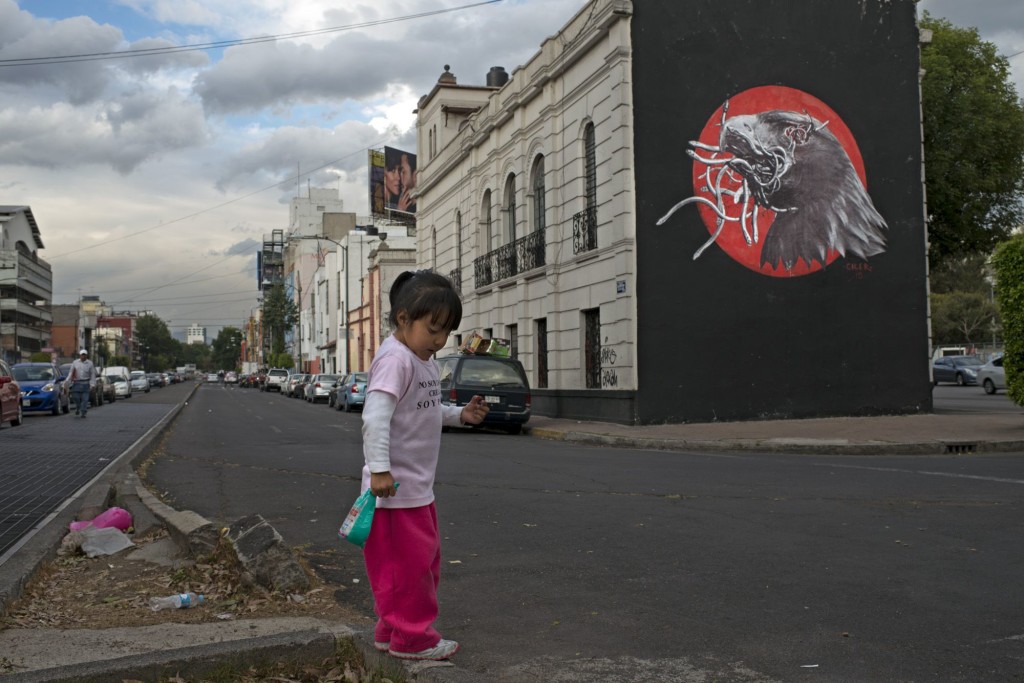
Ciler, a street artist native to Mexico City, uses the iconic symbols of his country, an eagle having caught a snake, to critique the violence of Mexican society. (Nasser Malek)
To make this test, Manifesto MX invited artists from Italy, Germany, Colombia, Argentina, and Mexico itself to publicly draw attention to the issues facing the country in a series of murals in Mexico City, the country’s largest city and capital and its most prolific forum for protest.
By enlisting the help of local shop owners to donate the faces of their buildings to the project, the artists have made sure that Mexico’s issues stay at the front of the national conscience.
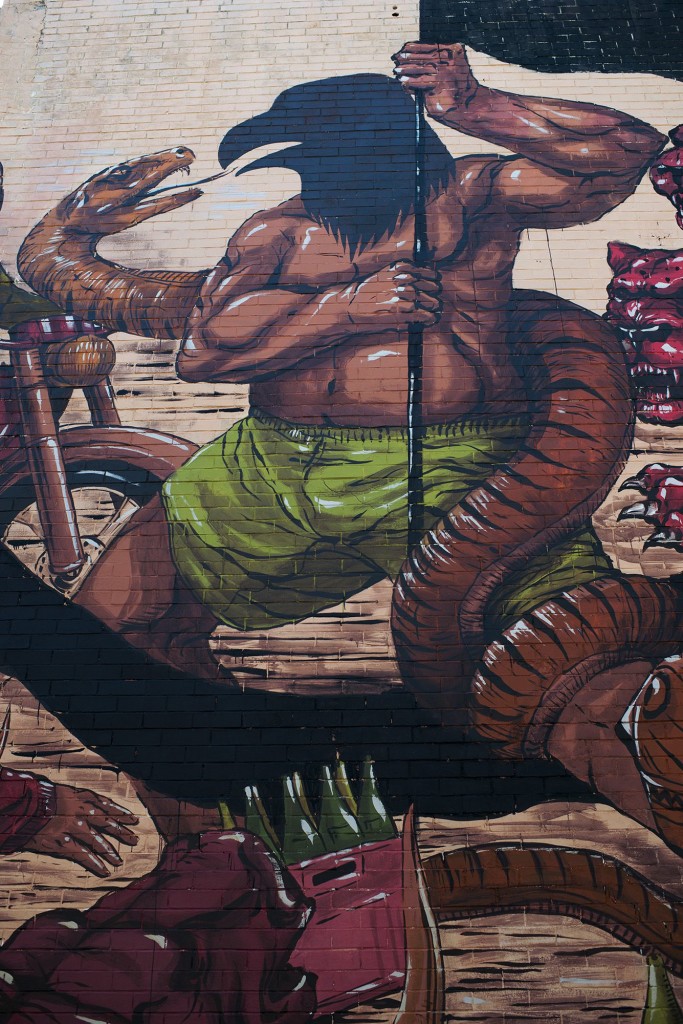
JAZ, an artist from Buenos Aires, Argentina, reimagines Mexico’s national crest in combat. (Nasser Malek)
Some building owners were made uneasy by the provocative content of the protest murals, such as one by the Italian artist Ericailcane, depicted below, which depicts a circus monkey holding two pesos as cymbals, wrapped in a band of the Mexican flag. The owner of the building which hosts the piece requested that Ericailcane cover the image of the flag, which he did, though the pesos were permitted to remain.
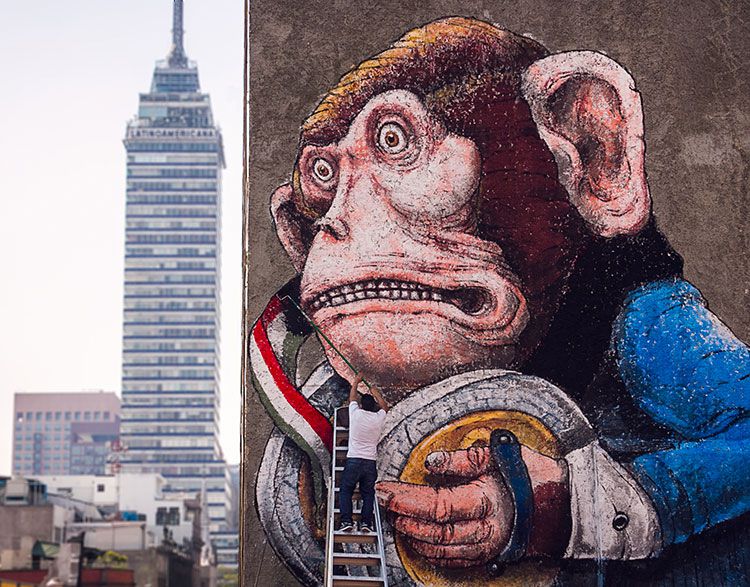
Italian artist Ericailcane was made to cover an image of the Mexican flag in his piece by the owner of its host building. He is seen here covering it in black, though the pesos wielded by the monkey were able to remain. (Nasser Malek)
This only served to demonstrate the insistence of the project on addressing the uncomfortable issues of Mexican society. While no specific lone issue was targeted by the protest art, Carpintero said that the artists were encouraged to explore a number of different subjects, including neoliberalism and the disappearance of the Ayotzinapa 43.
In this way, it resembled this year’s earlier nude protest and photography project “Poner el cuerpo. Sacar la voz.” (Using the body. Expressing the voice.) which saw students from the capital write messages on their bodies, stripping in public squares. The Manifesto MX project has the similar goal of making its messages unavoidable.

A mural by the German art duo Herakut, whose “Giant Storybook Project” has a popular following, tracing the story of two giants on murals around the world (Herakut.)
Street art is emerging as one of the most powerful forms of protest throughout Latin America, with artists using their work to draw attention to issues mainstream media does not address.
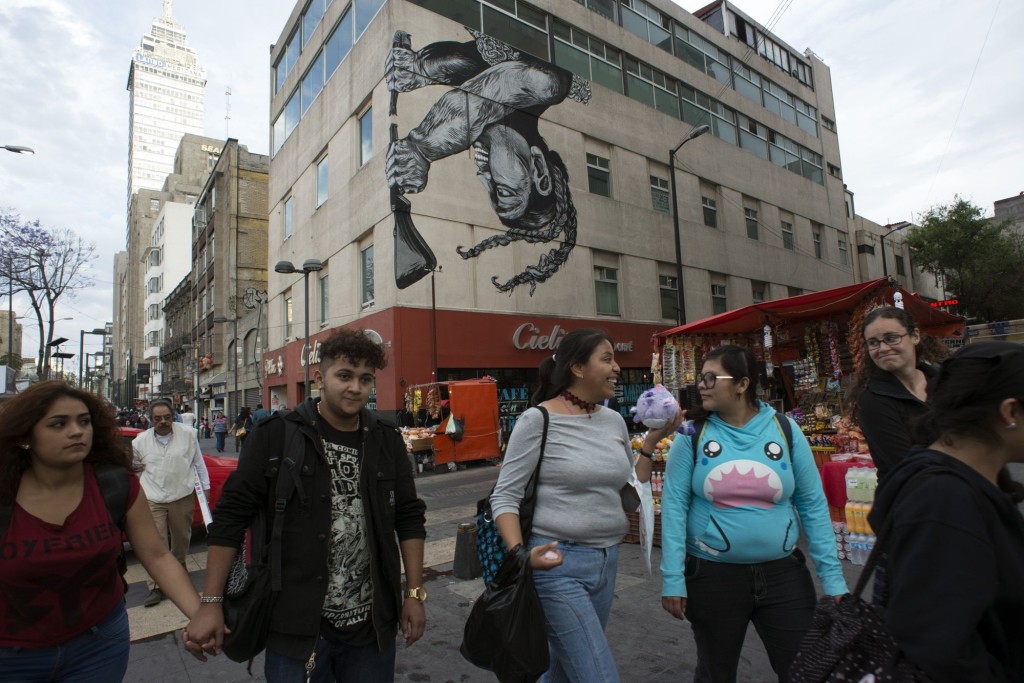
This child breaking a gun was painted by Bastardilla, a prolific Colombian street artist whose work can be found in Boston, Madrid, and Guatemala, as well as her native Colombia and the new addition of Mexico City. (Nasser Malek)
In addition to Mexico City’s collection of protest murals, artists in Brazil’s city of São Paulo, the largest in the southern hemisphere, have been using art to protest water shortages. This comes in a country with a strong history of art as protest, with many prominent examples coming out of last year’s controversial World Cup.
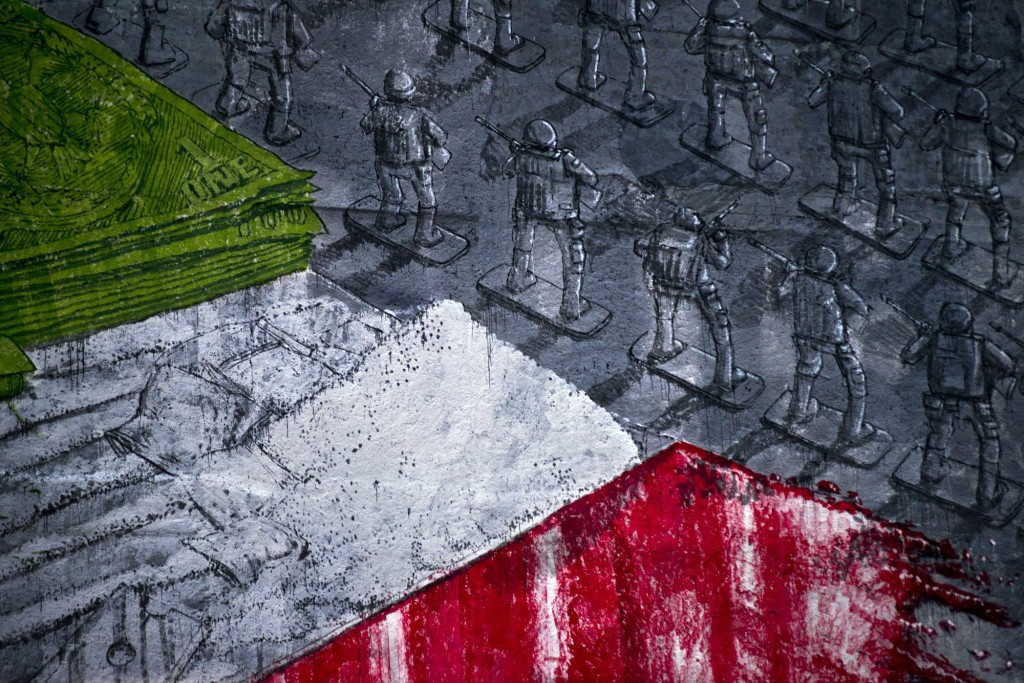
A mural by Blu, an Italian artist who has been compared to Banksy in both their work and hidden identity, shows Mexican and American toy soldiers lining a Mexican flag made by green dollars, white cocaine, and red blood. (Nasser Malek)
As Mexicans use art as an agent of social change in their country, projects such as Manifesto MX are helping to garner national and international support for Mexico’s people in their current tests of free speech and human rights.
